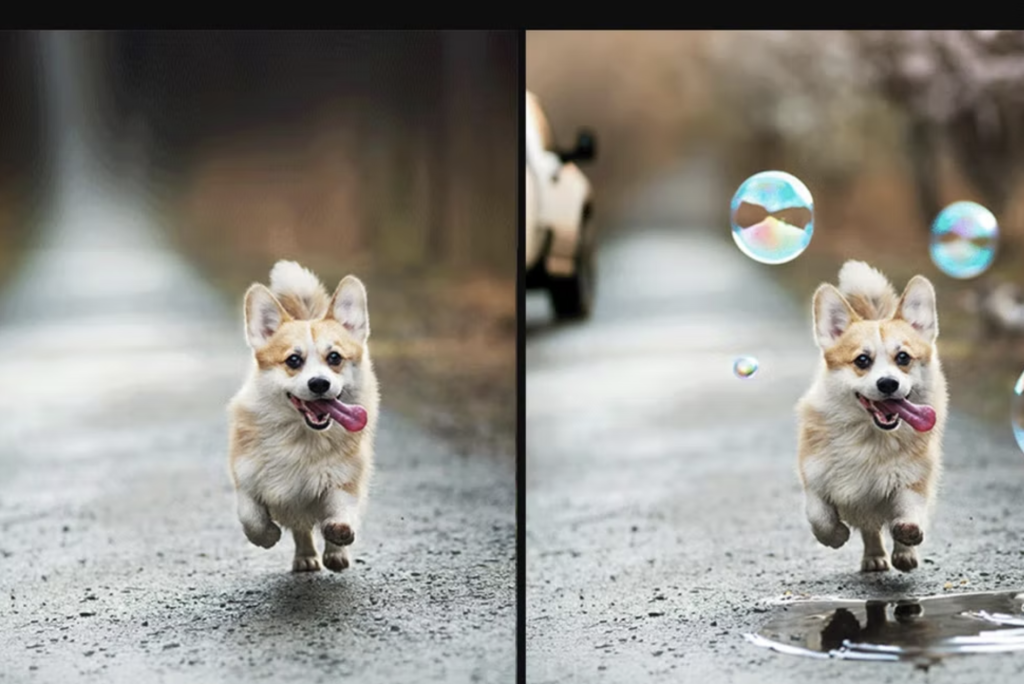Photoshop, the iconic image-editing software that has revolutionized the world of visual art, is diving headfirst into the realm of generative artificial intelligence.

Adobe Introduces AI-Powered Photoshop Features for Seamless Image Editing: Get First Look
In its latest beta release, Adobe has unveiled an exciting feature called Generative Fill, which enables users to seamlessly merge real-world images with digital artistry using the power of AI.
This cutting-edge functionality allows anyone with a creative mind and a modest monthly subscription to manipulate pictures effortlessly, blurring the boundaries between authenticity and fabrication.
While the concept of computer-generated images is not entirely new, Photoshop’s innovative capabilities bring a unique proposition to the table.
The software offers an intuitive platform for blending reality and digital craftsmanship, catering to a vast user base. With just a few clicks and a vivid imagination, individuals can now subtly transform photographs, achieving a level of realism that challenges the very notion of genuine versus counterfeit.
Acknowledging the potential dangers posed by the widespread dissemination of digitally manipulated images, Adobe has taken a proactive stance in tackling this issue.
Enter the Content Authenticity Initiative—an ingenious plan that introduces a “nutrition label” system, embedded within image files, documenting the alterations made to a picture, including any elements generated by artificial intelligence.
This initiative aims to enhance the credibility of digital media by enabling creators and publishers to prove the authenticity of their images. In a future where skepticism thrives, snapshots shared on social media platforms may require a content credential to verify their legitimacy, helping to differentiate truth from fiction in a world inundated with manipulated visuals.
Dana Rao, Adobe’s general counsel and chief trust officer, emphasized the importance of establishing truthfulness in the digital landscape. “Being able to prove what’s true is going to be essential for governments, for news agencies, and for regular people,” Rao stated.
The absence of a content credential should instill a sense of skepticism, prompting individuals to question the validity of an image. This revolutionary approach to image verification holds significant implications for various sectors, ensuring the reliability of information disseminated globally.
Adding to the excitement, Adobe’s latest Photoshop beta now incorporates the remarkable Generative Fill tool. Powered by Adobe Firefly, this feature utilizes cloud-based image synthesis and employs a technique called “inpainting” to seamlessly integrate AI-generated content into selected areas of an image. Users simply describe the desired image element they wish to see, and Firefly generates multiple options for selection.
The Generative Fill tool operates within a “Contextual Task Bar,” allowing users to modify specific areas of an existing image effortlessly. It intelligently adapts to perspective, lighting, and style, ensuring a cohesive and natural blend of synthesized and original imagery.
Not content with just one groundbreaking AI-powered feature, Adobe has also introduced Firefly’s capabilities to erase objects, remove parts of an image entirely, or extend image dimensions through an AI technique aptly named “outpainting.”
These functionalities, already familiar to users of OpenAI’s DALL-E 2 image generator, have now found a new home within Adobe’s flagship image editor.
The integration of AI-powered features into Photoshop signifies a remarkable leap forward for the world of image editing.
As Adobe catches up with the latest innovations, it faces the immense responsibility of addressing concerns surrounding harmful or socially stigmatized content generation, as well as the ethical use of artists’ images for training AI models.
Nonetheless, the potential for propaganda or disinformation is undeniable, making Adobe’s diligent efforts to enhance user accountability all the more crucial.
With its latest advancements, Adobe continues to shape the future of digital artistry, empowering users to effortlessly blend imagination and reality.
As Photoshop becomes increasingly equipped with AI prowess, the boundaries of creativity and authenticity will blur, opening up new possibilities for visual storytelling and image manipulation.